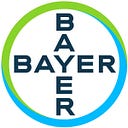Making Real Progress on Infusing the Patient Voice into Oncology Clinical Development
By: Carsten Brunn, Head of Pharmaceuticals, Americas Region, Bayer
33 million people worldwide are currently living with cancer, a number expected to increase 70% by the year 2030. In the U.S., the cancer burden is pervasive. The estimated lifetime risk for developing the disease is nearly 40 percent. Cancer is the leading cause of death in 22 states, and is projected to overtake cardiovascular disease as the leading cause of death nationwide by 2020.
Fortunately, oncology innovation is also on the rise. In the past five years alone, more than 70 new oncology therapies plus new indications have launched globally, and there are countless other compounds in development
But are we as an industry doing all we can to include the patient voice in our clinical drug development process?
Clinical trials are the hallmark of drug development and the entry point for new treatments. Pharmaceutical companies play a major role, as 70 percent of clinical trials are funded by the biopharmaceutical industry. Before any drug can enter the marketplace and become available to patients, it must first be studied extensively and proven to be safe and effective for the intended patient population.
Clinical trials are also a prime example of collaboration in action. Through clinical trials, representatives from across the oncology community come together to evaluate potential therapeutic candidates with the hope of one day delivering new treatments to the patients who need them most. Academic institutions, physicians, industry partners and regulatory bodies each have a voice in driving forward the process that brings a treatment from the point of discovery to delivery. But until only recently, one important voice has been noticeably under-represented in the process: that of the patient.
Patients can also be active partners in drug development. Infusing the patients’ voice into the development process helps scientists and clinicians gain valuable insights about the patient experience. This can lead to optimized clinical study designs, better trial enrollment and retention and, potentially, improved clinical outcomes. After all, only the patient truly knows what it is like to live with a disease or take a medicine. We all stand to gain from listening to patients, and empowering them by providing a forum to contribute to the drug development process.
We set out to move the ball forward on this point at Bayer’s fifth Patient Advocacy Summit, held once again at the annual meeting of the American Society for Clinical Oncology (ASCO) last month. Our plan, together with representatives from the European Men’s Health Forum, Fight Colorectal Cancer, FORCE (Facing Our Risk of Cancer Empowered), Friends of Cancer Research and WSCollaborative, was to examine the oncology clinical trials process and identify opportunities to make it more reflective of the patient experience
Imagine this in practice. Researchers develop a pivotal study for an investigational drug. They determine the ideal patient population to enroll as well as the appropriate efficacy and safety endpoints to measure clinical outcomes. This process of designing clinical trials seems theoretically flawless. But when a patient reviews the protocol and sits on the steering committee with the clinical trial investigators, practical issues like the following may emerge:
· Is the dosing or follow-up visit schedule too demanding for patients or their families or caregivers?
· Can the number of tests (blood samples, radiographic scans) be organized in a way that the patient will not lose workdays if still working or that caregivers will not be burdened with getting patients to a testing site?
· Is the patient’s emotional and psychosocial well-being taken into consideration?
During the summit, the patient advocate advisory committee (PAAC) identified several places where the patient voice could be infused into the development process. The collective team netted out that the recruitment of patient advisors who can consult on clinical trial design should begin as soon as program discussions around drug administration and target indication are approved.
Here’s where the rubber hits the road for us. As a next step, we are working together to establish protocols for engaging patients in the drug development process. In addition, we are devising a training module for both patient advocates and Bayer employees, so that they can engage each other quickly and efficiently. We are also continuing the work we started in 2016 with a pilot Phase II study in ovarian cancer, complete with an appointed patient expert helping to drive the process and identify the potential gaps mentioned above.
We’ve already gained so much as an organization through this process — most importantly, being reminded of the vital role that a patient-centered approach will increasingly play in bringing about innovation and change in the oncology industry. Our combined efforts over the past year demonstrate how successful we can be if we continue to work together and stand united with key stakeholders in the drug development process. Seeing our advocacy partners work toward a common goal with each other and with industry so seamlessly and successfully has been nothing short of inspiring. And as we go forward, we are committed to involving patients in our drug development processes at Bayer — not only in oncology, but also across our other therapeutic areas. It not only makes sense; it’s the right thing to do.
